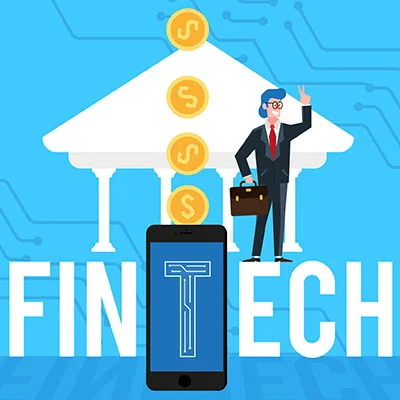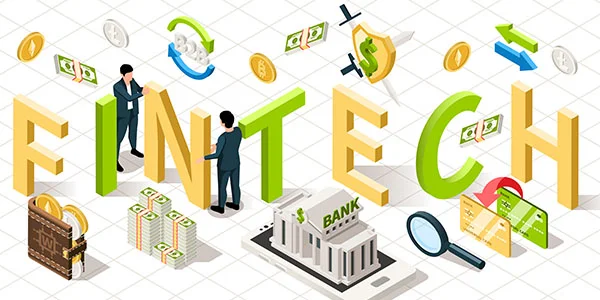Fintech Technology: for Financial Technology, refers to the use of innovative technology and software to provide and improve financial services. It encompasses a wide range of activities, products, and services that leverage advancements in information technology to make financial transactions more efficient, convenient, and accessible. Fintech technology often disrupts traditional financial systems and institutions by introducing new ways of managing and conducting financial activities.
History of Fintech Technology
The history of fintech technology can be traced back to the late 1950s, but it gained significant momentum in recent decades.
Here’s an overview of its evolution:
- 1950s-1970s: The Early Days
– The advent of credit cards in the 1950s marked one of the first fintech innovations.
– In the 1960s, the introduction of electronic funds transfer (EFT) allowed for electronic money transfers between banks.
– Automated Teller Machines (ATMs) were introduced in the 1970s, providing customers with access to cash 24/7. - 1980s-1990s: The Rise of Online Banking
– The development of computer networks and the internet laid the foundation for online banking in the 1980s.
– In 1983, the Society for Worldwide Interbank Financial Telecommunication (SWIFT) was founded to facilitate international financial transactions.
– The 1990s saw the emergence of online brokerages and the electronic trading of stocks. - Late 1990s-2000s: The Dot-Com Boom and Bust
– The late 1990s saw the dot-com boom, with many fintech startups focused on online trading platforms and financial services.
– However, the dot-com bubble burst in 2000, leading to a temporary setback for many fintech ventures. - 2000s-Present: The Fintech Revolution
– The 2000s witnessed a resurgence of fintech, driven by advancements in technology and changing consumer preferences.
– PayPal, founded in 1998, became a major player in online payments.
– The introduction of smartphones and mobile apps revolutionized the way people interacted with financial services.
– Crowdfunding platforms, like Kickstarter and Indiegogo, gained popularity.
– Peer-to-peer lending platforms, such as LendingClub and Prosper, emerged as alternatives to traditional banks.
– The launch of Bitcoin in 2009 marked the beginning of the cryptocurrency era, which spawned numerous blockchain and crypto-related fintech innovations.
– Robo-advisors, automated investment platforms, gained traction in the 2010s.
– Fintech companies like Square and Stripe disrupted the payments industry.
– Big tech companies, such as Apple, Google, and Amazon, entered the fintech space with products like Apple Pay, Google Wallet, and Amazon Pay. - 2020s and Beyond:
– The fintech industry continued to evolve rapidly, with a focus on areas like blockchain, digital currencies, decentralized finance (DeFi), and open banking.
– Regulatory bodies around the world began to address the challenges and opportunities posed by fintech.
– The COVID-19 pandemic accelerated the adoption of digital financial services and online payments.
The history of fintech technology is characterized by a continuous cycle of innovation, disruption, and adaptation to changing technologies and consumer demands. Fintech is expected to remain a dynamic and transformative force in the financial industry, shaping the way we access and manage our finances in the future.

Types of Fintech Technology
Fintech technology encompasses a wide range of financial innovations, each catering to different aspects of the financial industry.
Here are some common types of fintech technology:
- Payment and Money Transfer Solutions:
– Mobile Wallets: Apps like Apple Pay, Google Pay, and Samsung Pay allow users to make payments using their smartphones.
– Peer-to-Peer (P2P) Payment Platforms: Services like PayPal, Venmo, and Cash App facilitate easy person-to-person money transfers.
– Digital Currencies: Cryptocurrencies like Bitcoin and Ethereum offer decentralized digital payment options.
– Cross-Border Payments: Fintech companies like TransferWise (now Wise) offer cost-effective and efficient cross-border money transfers. - Online Lending and Crowdfunding:
– Peer-to-Peer (P2P) Lending: Platforms like LendingClub and Prosper connect borrowers with individual lenders.
– Online Marketplace Lending: Companies like SoFi and Funding Circle offer personal and business loans online.
– Crowdfunding: Platforms such as Kickstarter and Indiegogo allow individuals and businesses to raise funds from a crowd of investors or backers. - Digital Banking:
– Neobanks: Digital-only banks like Chime and N26 offer banking services without physical branches.
– Challenger Banks: These banks provide innovative features and user-friendly interfaces compared to traditional banks. - Robo-Advisors:
– Automated investment platforms like Betterment and Wealthfront use algorithms to create and manage investment portfolios. - Insurtech:
– Companies in this category leverage technology to enhance the insurance industry. Examples include Lemonade and Oscar Health. - Regtech (Regulatory Technology):
– These companies develop solutions to help financial institutions comply with regulations and manage risk more effectively. - Blockchain and Cryptocurrency:
– Blockchain Technology: Beyond cryptocurrencies, blockchain has applications in various financial processes, such as smart contracts and supply chain finance.
– Cryptocurrency Exchanges: Platforms like Coinbase and Binance enable the buying, selling, and trading of cryptocurrencies.
– Decentralized Finance (DeFi): DeFi projects aim to recreate traditional financial services (like lending and borrowing) using blockchain and smart contracts. - Personal Finance and Budgeting Apps:
– Apps like Mint and YNAB help users manage their finances, track expenses, and create budgets. - Digital Identity Verification:
– Fintech companies like Jumio and Onfido provide identity verification solutions for online transactions. - Open Banking:
– Open banking platforms enable secure sharing of financial data between banks and third-party fintech providers, allowing for innovative financial services. - Artificial Intelligence (AI) and Machine Learning:
– AI is used in credit scoring, fraud detection, chatbots for customer service, and more. - Cybersecurity Solutions:
– Fintech companies develop advanced cybersecurity tools to protect financial institutions and users from cyber threats. - Quantitative Finance and Algorithmic Trading:
– Fintech plays a significant role in algorithmic trading and quantitative analysis, optimizing trading strategies and risk management.
These are just some of the many types of fintech technology, and the industry continues to evolve with ongoing technological advancements and changing consumer preferences. Fintech innovations are reshaping the financial landscape, making financial services more accessible, efficient, and user-friendly.
Facts of Fintech Technology
Certainly! Here are some interesting facts about fintech technology:
- Global Growth: The fintech industry has experienced rapid global growth. In 2020, global fintech investment reached over $100 billion, highlighting the industry’s increasing importance.
- Increased Adoption: Fintech adoption rates have been rising steadily. According to a PwC survey, 64% of consumers used fintech services in 2020, and this number is expected to continue to grow.
- Mobile-First: Fintech companies often prioritize mobile-first solutions, recognizing the widespread use of smartphones. Mobile apps are a common way for users to access fintech services.
- Blockchain and Cryptocurrencies: Bitcoin, the first cryptocurrency, was created in 2009. Since then, the blockchain and cryptocurrency space has grown significantly, with thousands of cryptocurrencies and various blockchain applications.
- Financial Inclusion: Fintech has the potential to promote financial inclusion by providing banking and payment services to underserved populations, particularly in regions with limited access to traditional banking.
- Challenger Banks: Neobanks, or digital-only banks, have gained popularity, offering innovative features and often lower fees than traditional banks. Examples include Chime, Revolut, and Monzo.
- Robo-Advisors: Robo-advisors use algorithms to provide automated investment advice and portfolio management. They have attracted both retail and institutional investors.
- Open Banking: Open banking initiatives, such as PSD2 in Europe, are encouraging the sharing of financial data between banks and third-party fintech providers, leading to innovative financial services.
- Fintech Regulation: Governments and regulatory bodies are developing regulations specific to fintech to ensure consumer protection and maintain financial stability while fostering innovation.
- Cybersecurity Concerns: With increased reliance on digital financial services, cybersecurity has become a critical issue. Fintech companies invest heavily in cybersecurity to protect user data and transactions.
- Big Tech’s Entry: Large technology companies like Apple, Google, and Amazon have entered the fintech space with payment solutions and other financial services.
- Cryptocurrency Market Volatility: The cryptocurrency market is known for its extreme price volatility, attracting both investors and speculators. Prices of cryptocurrencies can fluctuate significantly over short periods.
- Impact on Traditional Banking: Fintech has disrupted traditional banking by offering alternative financial services, leading to competition and innovation in the banking sector.
- Economic Inclusion: Fintech has the potential to boost economic inclusion by offering financial services to small businesses and individuals who were previously excluded from the traditional financial system.
- Artificial Intelligence (AI): AI and machine learning are used in fintech for fraud detection, credit scoring, chatbots, and more, enhancing the efficiency and accuracy of financial services.
These facts underscore the transformative and dynamic nature of the fintech industry, which continues to shape the way people manage, access, and interact with financial services worldwide.

Benefits of Fintech Technology
Fintech technology offers numerous benefits to individuals, businesses, and the financial industry as a whole.
Here are some of the key advantages:
- Convenience and Accessibility:
– Fintech services are often accessible 24/7 through mobile apps or websites, allowing users to manage their finances anytime, anywhere.
– Users can make payments, transfer money, and access financial information with ease. - Cost Savings:
– Fintech companies typically have lower operational costs than traditional financial institutions, leading to reduced fees and better rates for users.
– Online transactions can be more cost-effective than traditional banking methods, particularly for cross-border transfers. - Financial Inclusion:
– Fintech can provide financial services to underserved populations who lack access to traditional banks.
– It allows people without a bank account to receive payments, make transactions, and access credit services. - Efficiency and Speed:
– Fintech automates many financial processes, reducing manual paperwork and processing times.
– Transactions, including cross-border transfers, can be executed faster than traditional banking methods. - Personalization:
– Fintech platforms often use data analytics and AI to offer personalized financial advice and product recommendations.
– This personalization can help users make more informed financial decisions. - Transparency:
– Blockchain technology, often used in fintech, provides transparency and traceability for transactions.
– Users can verify transactions and track the movement of assets on a blockchain. - Security and Fraud Prevention:
– Fintech companies invest heavily in cybersecurity to protect user data and transactions.
– Technologies like biometrics and encryption enhance security. - Diversified Investment Options:
– Robo-advisors and investment fintech platforms offer diversified investment opportunities to users, even those with smaller amounts of capital. - Global Reach:
– Fintech services can be used globally, facilitating cross-border commerce and financial transactions.
– Digital currencies like Bitcoin offer a borderless alternative to traditional currencies. - Savings and Budgeting Tools:
– Fintech apps often include tools for budgeting, saving, and tracking expenses, helping users manage their finances effectively. - Financial Education:
– Some fintech platforms offer educational resources and tools to improve financial literacy among users. - Competitive Market:
– Fintech fosters competition in the financial industry, leading to innovative products and services.
– Traditional financial institutions may improve their offerings in response to fintech competition. - Business Efficiency:
– Fintech solutions can streamline financial operations for businesses, such as invoicing, payroll, and inventory management. - Data Insights:
– Fintech companies can analyze large volumes of data to provide valuable insights to businesses and individuals, aiding in decision-making. - Environmental Impact:
– Digital financial transactions have a smaller carbon footprint compared to paper-based transactions, contributing to environmental sustainability.
These benefits highlight how fintech technology is reshaping the financial landscape, making financial services more user-friendly, efficient, and inclusive. However, it’s important to note that fintech also presents challenges and regulatory considerations that need to be addressed to ensure its continued positive impact.
Why fintech is in demand?
Fintech is in high demand for several reasons, reflecting the changing needs and expectations of consumers, businesses, and the financial industry as a whole.
Here are key factors driving the demand for fintech:
Fintech is in high demand for several reasons, reflecting the changing needs and expectations of consumers, businesses, and the financial industry as a whole.
Here are key factors driving the demand for fintech:
- Convenience and Accessibility: Fintech offers easy access to a wide range of financial services through user-friendly mobile apps and websites. This convenience resonates with users who prefer digital interactions and the ability to manage their finances at their convenience.
- Cost Savings: Fintech companies typically have lower overhead and operational costs compared to traditional banks and financial institutions. This allows them to offer more competitive rates and lower fees, making financial services more affordable for consumers.
- Financial Inclusion: Fintech has the potential to bring financial services to underserved and unbanked populations. By leveraging technology, fintech companies can reach individuals and businesses in remote or economically disadvantaged areas, promoting financial inclusion.
- Speed and Efficiency: Fintech automates many financial processes, reducing the time and effort required for tasks like money transfers, loan approvals, and investment management. Transactions are often executed more quickly compared to traditional methods.
- Personalization: Fintech platforms use data analytics and artificial intelligence to understand user behavior and preferences. This enables them to provide personalized financial advice and product recommendations, improving the user experience.
- Security and Fraud Prevention: Fintech companies prioritize cybersecurity to protect user data and transactions. Advanced encryption, biometric authentication, and fraud detection technologies enhance security, instilling confidence in users.
- Diversified Investment Opportunities: Robo-advisors and investment fintech platforms offer diversified investment options to users, including those with limited capital. This democratizes access to investment opportunities that were once reserved for wealthier individuals.
- Global Reach: Fintech services are not limited by geographic boundaries, making them suitable for cross-border commerce and international financial transactions. Digital currencies like Bitcoin offer borderless alternatives to traditional currencies.
- Technological Advancements: Ongoing technological advancements, such as blockchain and artificial intelligence, continue to drive innovation within the fintech sector. These technologies open up new possibilities for financial services and products.
- Regulatory Support and Changes: Many governments and regulatory bodies are recognizing the benefits of fintech and implementing regulatory frameworks to support its growth. This regulatory support can provide legitimacy and confidence in the industry.
- Customer Demand: As consumers become more tech-savvy, they increasingly demand digital solutions for their financial needs. Fintech companies respond to this demand by developing innovative and user-centric products and services.
- Competitive Landscape: Fintech competition encourages traditional financial institutions to improve their offerings, leading to greater innovation and better services for consumers.
- Startup Ecosystem: The availability of venture capital and investment in fintech startups has fueled the growth of the industry, allowing new players to enter the market and disrupt traditional financial services.
Overall, fintech is in demand because it addresses the evolving expectations and requirements of individuals and businesses in an increasingly digital and interconnected world. It offers solutions that are more efficient, cost-effective, and accessible, making it a transformative force in the financial industry.
How FinTech is used for payments?
Fintech is extensively used for payments, revolutionizing the way individuals and businesses make transactions.
Here’s how fintech is employed in payment processes:
- Mobile Wallets: Fintech companies have developed mobile wallet apps, such as Apple Pay, Google Pay, and Samsung Pay. Users can link their credit cards, debit cards, or bank accounts to these apps and make payments at physical retail stores or online. Mobile wallets often use technologies like Near Field Communication (NFC) for contactless payments.
- Peer-to-Peer (P2P) Payment Apps: Fintech apps like PayPal, Venmo, and Cash App allow individuals to send money directly to each other through their mobile phones. These apps are widely used for splitting bills, paying rent, or reimbursing friends.
- Digital Currencies: Cryptocurrencies like Bitcoin and Ethereum have gained popularity as digital payment methods. Fintech enables users to buy, store, and use cryptocurrencies for various transactions. Blockchain technology, the backbone of cryptocurrencies, ensures secure and transparent transactions.
- Online Payment Gateways: Fintech payment gateways like Stripe, Square, and PayPal (for online businesses) enable e-commerce websites and online marketplaces to accept payments securely. These services often include features like fraud detection and seamless checkout experiences.
- Contactless Payments: Fintech has promoted contactless payment methods, such as tap-to-pay cards and mobile payment apps. These methods are faster and more secure than traditional card swiping or chip-and-PIN transactions.
- QR Code Payments: QR code-based payment systems have become popular in various regions. Users can scan a QR code displayed by a merchant to make a payment. Fintech solutions like Alipay and WeChat Pay in China have popularized QR code payments.
- Cryptocurrency Payment Processors: Fintech companies like BitPay allow businesses to accept cryptocurrencies as payment for goods and services. These services often convert cryptocurrencies into fiat currency to minimize volatility risk for merchants.
- Cross-Border Payments: Traditional international money transfers can be costly and slow. Fintech solutions like TransferWise (Wise) and Revolut offer competitive exchange rates and faster cross-border payments.
- Bill Payment and Reminders: Fintech apps and platforms provide bill payment services, allowing users to schedule and pay bills electronically. Some apps also send payment reminders to help users avoid late fees.
- NFC-Based Wearables: Fintech extends to wearable devices like smartwatches and fitness trackers, which support NFC technology for contactless payments. These devices enable users to make payments without using their smartphones or cards.
- Online Marketplaces and Platforms: Fintech payment solutions are integrated into various online marketplaces, platforms, and services. This includes rideshare apps, food delivery services, and online booking platforms.
- Microtransactions and Micropayments: Fintech enables microtransactions for small-value payments, making it feasible to pay for digital content, subscriptions, and in-game purchases without high transaction fees.
- Subscription Billing: Businesses use fintech solutions for subscription billing, managing recurring payments for services like streaming, software, and online memberships.
- Splitting Expenses: Fintech apps often include features for splitting expenses among friends or group members. Users can easily divide bills and settle accounts within the app.
- Charitable Donations: Fintech platforms facilitate easy and secure charitable donations, allowing individuals and organizations to contribute to causes they support.
Overall, fintech has streamlined payment processes, making them more efficient, secure, and convenient for consumers and businesses alike. The continuous innovation in fintech is likely to further enhance payment options and experiences in the future.
Internet of Things: (IoT) Benefits & Building The Urban Future





